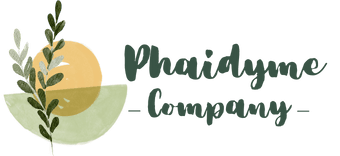If you are not familiar with the various methods of fraud in Hing and Galbanum, you will fail in the business of these two products.
Many industrial and pharmaceutical companies get different results from their laboratory analyses every time; the question arises for them, why even though we buy the raw material from the same country, the results of laboratory analyses and research are different?
The answer is simple: adulteration, by adding different impurities to Hing and Galbanum.
I refrain from mentioning them due to the prevention of promoting the wrong methods and culture of cheating, which we have come to experimentally over the years while buying and exploiting Hing and Galbanum.
The reason for the addition of impurity is that because the Iranian Hing has a very pungent smell and due to the passage of time and based on the different species and the conditions of the extraction poles, it takes on different colors; the addition of impurities is hardly detectable; unless you have the expertise, not academically but purely experientially.
I bought Hing and Galbanum, but it was neither Hing nor Galbanum
Both Hing and Galbanum belong to the genus Ferula, and in Iran, the genus Ferula L. has 32 species.
Many of these species are very similar to each other, But sometimes the height of their stem is different also in some species the flowers are white and the fruit after ripening are broad, coin-like, and fragrant.
If the extraction team is a beginner and does not have a correct understanding of the Ferula species in the pasture where they work in it; they may cut the wrong species of ferula to extract the resin, which can be detrimental to the buyer.
What is the best method to detect fraud in Hing and Galbanum?
There is no exact method to prove whether a kilo of Hing or Galbanum gum resin is adulterated or not; except by using experimental methods or visiting the product at the extraction site.
Be careful that even visiting each of the Hing or Galbanum resin at the extraction site cannot be a reliable method; because the effects of fraud may appear a few days later after purchasing or exporting the product.
How does Phaidyme detect fake Hing and Galbanum?
The credibility of our customers is higher than our credibility.
The safest way to buy a pure product is to buy from reputable sellers.
Due to their presence in international markets, these sellers are never willing to damage their reputation with the smallest mistake, so they are always trying to provide the highest quality products to improve their brand reputation.
We at Phaidyme Company use the following solutions to provide reliable products to international buyers:
A. Choosing suitable pastures based on the species of Hing and Galbanum and also the number of active ingredients.
B. Use of local and trained labor
C. Supervise of correct and principled extraction
D. Updating the knowledge of extraction teams to extract Hing and Galbanum resin with the least impurity and the most active ingredients, by the side of not destroying pastures and the life of Hing and Galbanum plants.
With the Supervising and detection of expert Phaidyme Company experts during extraction, it is avoided to cutting the wrong species of the Ferula genus.
Phaidyme experts assign a code to each barrel while supervising and delivering each barrel of Hing and Galbanum resin.
This code contains the following information:
What is the benefit of assigning a code to each of the Hing and Galbanum barrels for the buyers of Phaidyme Company?
A. Selling Galbanum or Hing based on the usage and purpose of the buyer, considering the presence of different species and poles of the Ferula that produce these Oleo-gum resins.
B. If Phaidyme experts or domestic and international buyers realize fraud or mistake before or after purchase, they can announce the code on the barrel with the problem so that we can follow up on the issue.
What profit does fraud in the sale of Hing and Galbanum make to the offending sellers?
The main reason for cheating in the sale of Hing and Galbanum is the increase in false weight and, as a result, more profit.
But there is another hidden reason.
For example, when selling Hing, any of the following conditions may occur in the transaction:
A. Sometimes a buyer orders a bitter Hing, but the seller only has a sweet Hing.
B. Sometimes the buyer orders Iranian bitter Hing, But the seller has Uzbek Hing.
C. Sometimes the buyer sends a video or photo to inform the seller of the Hing they need, But the seller does not have the Hing required by the buyer or cannot identify it correctly according to the photo or video.
In each of the above situations, the fraudulent seller tries to create a structure by combining the Hing from different areas so that it has the maximum similarity with the Hing desired by the buyer in terms of appearance characteristics such as color and smell. Of course, this is one of the most mundane methods of cheating in the sale of Hing (Asafoetida).
Unfortunately, fraud in the sale of Galbanum also has different methods.
Who are the main victims of buying fake Hing and Galbanum?
In the following, you will get to know only part of the harmful effects of selling fake gum resin of Hing and Galbanum:
Reference:
- R&D team of Phaidyme Company
- Phaidyme Company’s extraction team
